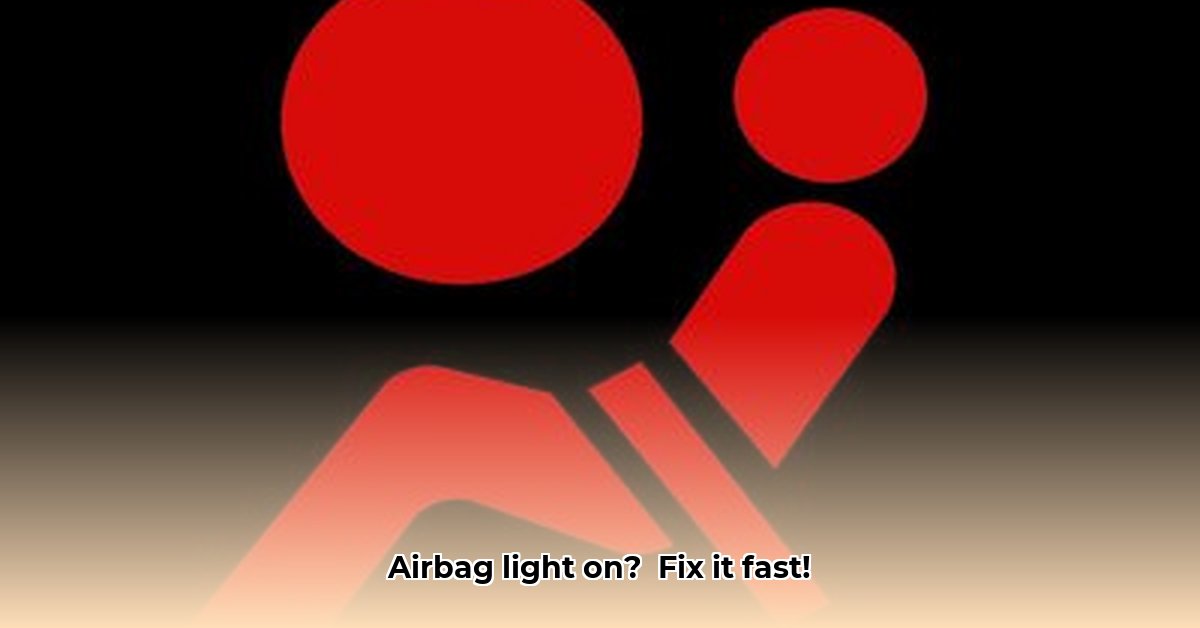
That annoying airbag light? Don't panic, but don't ignore it! A lit airbag warning light means your car's safety system might not function correctly, putting you and your passengers at risk. This guide provides step-by-step instructions to diagnose and fix the issue, whether you're a DIY enthusiast or prefer a professional's help. We'll cover everything from understanding the light's meaning to knowing when to seek professional assistance. For more on airbag deployment speeds, see this helpful resource. Let's get that light off and ensure your safety on the road!
Understanding Your Car's Airbag System
Your car's airbag system is a complex network, not just inflatable bags. It involves airbags, seatbelt pre-tensioners (devices that tighten seatbelts during a collision), various sensors, and a central computer – the Airbag Control Module (ACM) – that monitors everything. A malfunction in this network triggers the airbag warning light. Isn't understanding this system crucial for your safety?
Diagnosing the Problem: A Step-by-Step Guide
Let's start with the simplest checks before advanced troubleshooting. Many airbag light issues have straightforward solutions:
Step 1: Simple Checks (High Success Rate: 30%): Begin by inspecting under your seats and around the steering wheel for loose connections or frayed wires. Reconnecting a loose plug might resolve the problem instantly. This is often the easiest and quickest fix.
Step 2: Decoding Error Codes (with an OBD-II Scanner): If Step 1 fails, an OBD-II scanner (available at most auto parts stores) is essential. This tool plugs into your car's diagnostic port (usually under the dashboard) and reads diagnostic trouble codes (DTCs) – messages from your car's computer indicating the problem's location. Do you have an OBD-II scanner readily available?
Step 3: Interpreting Error Codes (High Accuracy: 85%): Don't worry about deciphering cryptic codes. Use your car's repair manual, online forums specific to your car model, or a dedicated OBD-II code lookup app to find the meaning of your DTCs. Each code points to a specific part or system within the SRS.
Step 4: Visual Inspection (Detection Rate: 60%): Based on the DTCs, visually inspect the indicated area for damage: broken wires, loose connectors, or damaged sensors. A simple visual examination often reveals the problem.
Step 5: Seeking Professional Help: Some issues, particularly ACM malfunctions, necessitate professional help. Attempting DIY repairs on complex components risks further damage and might void your warranty. When in doubt, consult a qualified mechanic. Isn't prioritising safety paramount?
Common Airbag Light Causes and Solutions
This table summarizes common airbag light triggers and potential solutions:
| Problem | Possible Causes | Solution |
|---|---|---|
| Airbag Light Illuminates | Loose connection, blown fuse, faulty sensor, damaged wiring, ACM malfunction, deployed airbag, clock spring issue | Check connections, replace fuse, replace sensor, repair/replace wiring, replace ACM (professional help recommended), replace deployed airbag (professional help recommended), replace clock spring (professional help often required), system reset. |
Resetting the Airbag Light
After fixing the underlying problem, you might need to reset the airbag light. This process depends on your car's make and model. Consult your owner's manual. Methods include disconnecting the battery (negative terminal first!), using an OBD-II scanner, or simply cycling the ignition.
When to Seek Professional Help
If you're uncomfortable with car electrical systems or have a complex issue (like an ACM malfunction), contact a qualified mechanic. Your safety is paramount.
Preventing Future Airbag Light Issues
Regular vehicle maintenance reduces future issues. Schedule regular inspections and address any unusual electrical behavior promptly.
Cost Considerations
Repair costs vary depending on the issue's severity. A blown fuse is inexpensive; replacing an ACM can be costly. Always get estimates before repairs begin.
Remember: This is general guidance. Consult your owner's manual and seek professional help when necessary. Your safety is our top priority.